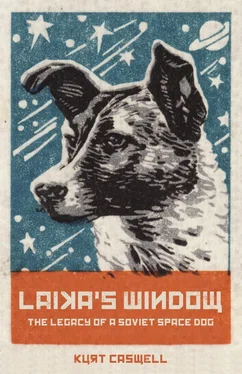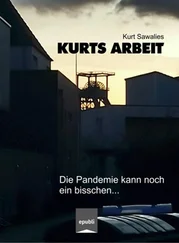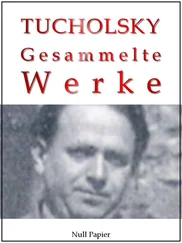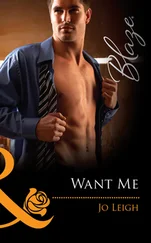With Laika on site at Baikonur, along with her handlers and medical staff, Sputnik II could be prepped and loaded for launch. One night Baikonur’s deputy commander, Anatoly Kirillov, was watching the three little dogs running about the control room. He and his co-workers felt sorry for the “little mongrels,” as he calls them in Roads to Space . “We lamented the fact that one of them would soon die a gruesome death in orbit.” His lamentation was interrupted, however, when someone came rushing into the control room to announce that Sputnik I was about to pass overhead. Korolev, members of the Soviet government, and other personnel assembled outside under the night sky. According to Burgess and Dubbs, people all over the world had been watching Sputnik I pass overhead, but the team that built the satellite had never seen it. At Baikonur, the satellite would be visible only briefly and just above the horizon. It would be difficult to see, but on this night, even if only for a moment, the team had a chance. “When the satellite did appear,” said Kirillov, “it rose high in the sky as it moved from the south-west toward the northeast. It kept us spellbound for several minutes until it finally vanished.”
Ivanovsky also records this moment in The First Steps . “We were staring at the horizon,” he writes. “Minutes passed by… it was not so important whether we were going to see [ Sputnik I ] or not, it was essential that it was flying high in outer space, and it was an established fact! A few minutes later someone spotted a moving point of light.” There it was, Sputnik I . It looked to Ivanovsky like a firefly aglow on a summer evening. “The firefly seemed to move proudly, confidently, and even at ease,” he writes. “Many people wiped off a tear. I have seen, more than once, the twinkling firefly in the sky, but that first sighting would be stored in my memory forever.”
Most of the assemblage returned to their workstations or to their leisure, Kirillov reports in Roads to Space , but he and a few others lingered in the cold with Korolev. The chief designer stood in silence, his breath visible in the air, gazing up at the night sky as if the satellite might appear again. “Well, my friends,” Korolev finally said, “I’ve known for a long time that satellites could be launched with the help of this.” He put his finger to his temple to indicate the human mind. “But that we actually managed to pull it off using our own heads and hands and this amazing thing,” Korolev then motioned to his heart, “I find absolutely incredible.”
¤
On the morning of October 31 one of the caregivers took Laika out for her morning walk. This was the usual routine. Perhaps they even walked a familiar route, one they had been walking since the day Laika arrived at Baikonur. For Laika, then, there was nothing extraordinary about this walk, nothing special about this day.
At 10 a.m. Laika was taken to the medical facility for flight preparations. “She was quietly lying on a shining white table,” Ivanovsky writes. “The technicians cleaned her skin with a weak solution of alcohol, carefully combed her hair, and applied iodine water and streptocide powder to the spots where electrodes were implanted under the skin to record the ECG. These procedures took two hours.” Two hours is a long time for a young dog like Laika to allow the team to work on her, and yet she did, so patient and amiable was her character. The procedures were familiar to her too, part of her training. The iodine water and streptocide may have soothed her itchy incisions, now mostly healed, where her carotid artery lay in a flap of skin, where the electrode rings were seated beneath the skin in her chest, where the lead wires emerged from beneath the skin high on her shoulders. The combing, those long, gentle sweeps of the brush and the comber’s hand must have also soothed her. They cared for this dog, even as a mortician might care for the dead, might care for the body soon to be laid to rest, already to be mourned.
It was noon before they finished. The next step was to dress Laika in her vest and harness and attach the waste collection bag. Ivanovsky reports that at this point, Korolev entered the lab dressed in a white lab coat. He examined Laika and the preparations the team had made, all the while speaking softly to her, placing his hands on her body, ruffing her about the neck and scratching her behind the ears. Korolev would remain with Laika until she was ready to be sealed inside her capsule. He attended to each detail of her preparation, checking the work of the team to be sure that once Laika was in orbit the scientists on the ground would receive the data they needed, and to be sure that Laika received whatever she needed.
The team prepped her capsule, loading the space dog food into the feeding tin, the chemicals in the regeneration unit that would help scrub CO2 from the air, purifying it to make breathing possible for as long as possible. At 2 p.m. Laika went into her capsule, and her sensors were attached to the recording equipment. All this was familiar to her. They sealed the door. Now the only connection Laika would have with the outside world was that little round window. The people who had cared for her and trained her could see in, and she could see out. She waited patiently inside the capsule while the team made a series of tests on the equipment, the equipment measuring Laika’s heart rate, blood pressure, her respiration and movements. The oxygen levels inside the capsule were adequate, and the CO2 scrubbers were working just fine. Faces peered in at her through the glass. There she is , someone might have said. She’s doing just fine. Everything seems to be working just fine .
At 1 a.m. on November 1, “the [capsule] with Laika inside was delivered to be put into the rocket,” writes Ivanovsky. “A little ‘dog house’ was slowly lifted on a large crane hook. The assemblers picked it up with caring hands and secured it in place.” When the team moved her from the preparation room, she would have seen the bright lights of the room turn to a black night sky through her window and then felt the lift and perhaps twirl of her cabin as she swung from the crane, drawn up to the top of the rocket, and moved into place.
“Of course, we knew this satellite would not come back to Earth,” writes Adil Ravgatovna Kotovskaya in her article “Why Were Flying Dogs Needed for Rockets and Satellites to Launch Yuri Gagarin?” “Therefore, we saw Laika off saying goodbye to her and asking for her forgiveness.”
¤
Inside the capsule Laika waited, and she would continue to wait for three days as final preparations were made for launch. The team monitored her vital signs and observed her through the window. Her respiration rate was at 16 to 37 breaths per minute, her heart rate between 68 and 120 beats per minute, all within the normal ranges the team had recorded during her training. Through the window, Burgess and Dubbs write, Laika “could be observed… sleeping, feeding, or reacting to a human face peering in at her.”
For Laika this was just another training exercise, like the many she had been through before. In her experience, when she went into the capsule, she always came out, even if a number of hours passed, or a number of days. Why would this time be different? A dog trainer once told me that a dog becomes accustomed to its people leaving the house and returning. When you leave the house, your dog knows, in the way a dog can know, that you are going to return because you always have. I imagine Laika was content inside the capsule because it was familiar, she had trained for this, and she knew that someone, Gazenko or Yazdovsky or one of the caregivers, would release her. She would again be leashed and go outdoors for a walk to stretch her legs. She would again be reunited with the other space dogs she lived and worked and walked with. She would return to her kennel, her familiar bed and water dish, the familiar dogs on either side of her, the familiar lights and sounds of the kennel, its smells. She would again be fed at the regular time. She would again go home. For Laika, the capsule was a kind of home too, one that she had grown accustomed to in her training. She was comfortable inside the capsule and made to feel comfortable, well attended, looked after. For Laika this was a day like any other.
Читать дальше












